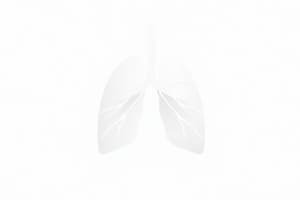Podcast
Questions and Answers
What are common indications for thoracic surgery?
What are common indications for thoracic surgery?
- Kidney stones and liver cysts
- Heart diseases and aortic aneurysms
- Brain tumors and spinal cord injuries
- Lung cancer and esophageal diseases (correct)
What is a particular anesthetic challenge of thoracic anesthesia?
What is a particular anesthetic challenge of thoracic anesthesia?
- Ensuring correct positioning of the patient
- Controlling the airway during bronchoscopy (correct)
- Monitoring the oxygen level in the blood
- Maintaining proper blood pressure
What is a common diagnostic procedure associated with thoracic surgery?
What is a common diagnostic procedure associated with thoracic surgery?
- Gastroscopy
- Echocardiogram
- Colonoscopy
- Mediastinoscopy (correct)
What is a potential consequence of inhalation of an organic foreign body?
What is a potential consequence of inhalation of an organic foreign body?
What are the symptoms and signs of laryngeal or tracheal obstruction due to foreign body aspiration?
What are the symptoms and signs of laryngeal or tracheal obstruction due to foreign body aspiration?
What is recommended for induction during bronchoscopy in the presence of airway oedema?
What is recommended for induction during bronchoscopy in the presence of airway oedema?
Why is intubation not recommended prior to rigid bronchoscopy for foreign body removal?
Why is intubation not recommended prior to rigid bronchoscopy for foreign body removal?
What is the main purpose of monitoring using pulse oximetry, ECG, non-invasive blood pressure, and capnography during bronchoscopy for foreign body removal?
What is the main purpose of monitoring using pulse oximetry, ECG, non-invasive blood pressure, and capnography during bronchoscopy for foreign body removal?
Why is sedative premedication not recommended in the case of foreign body aspiration?
Why is sedative premedication not recommended in the case of foreign body aspiration?
How might oesophageal foreign bodies present with respiratory distress?
How might oesophageal foreign bodies present with respiratory distress?
Flashcards are hidden until you start studying
Study Notes
Indications for Thoracic Surgery
- Common indications include lung cancer, pneumothorax, and esophageal cancer
Challenges of Thoracic Anesthesia
- One particular anesthetic challenge is managing one-lung ventilation, which is often required during thoracic surgery
Diagnostic Procedures
- A common diagnostic procedure associated with thoracic surgery is bronchoscopy, which allows for visualization of the airways and diagnosis of conditions such as foreign body aspiration
Consequences of Inhalation of Organic Foreign Body
- A potential consequence of inhalation of an organic foreign body is lung abscess or pneumonia
Symptoms and Signs of Laryngeal or Tracheal Obstruction
- Symptoms and signs of laryngeal or tracheal obstruction due to foreign body aspiration include wheezing, coughing, stridor, and respiratory distress
- Other signs may include increased respiratory rate, decreased oxygen saturation, and use of accessory muscles
Induction during Bronchoscopy
- During bronchoscopy in the presence of airway oedema, awake fibreoptic intubation is recommended for induction
Intubation prior to Rigid Bronchoscopy
- Intubation is not recommended prior to rigid bronchoscopy for foreign body removal because it can push the foreign body further into the airway, making removal more difficult
Monitoring during Bronchoscopy
- The main purpose of monitoring using pulse oximetry, ECG, non-invasive blood pressure, and capnography during bronchoscopy for foreign body removal is to detect and respond to potential complications such as hypoxia, respiratory failure, and cardiac arrhythmias
Sedative Premedication
- Sedative premedication is not recommended in the case of foreign body aspiration because it can increase the risk of respiratory failure and make it more difficult to diagnose and treat the underlying condition
Oesophageal Foreign Bodies
- Oesophageal foreign bodies may present with respiratory distress due to compression of the trachea or bronchi, or due to the foreign body being inhaled into the airway
Studying That Suits You
Use AI to generate personalized quizzes and flashcards to suit your learning preferences.




